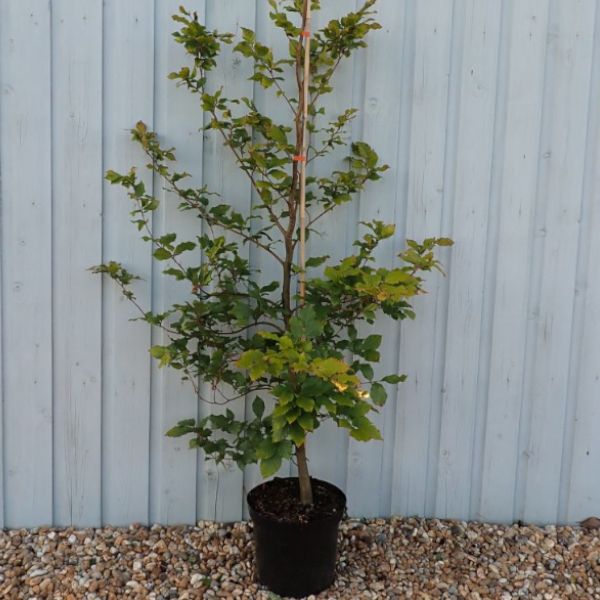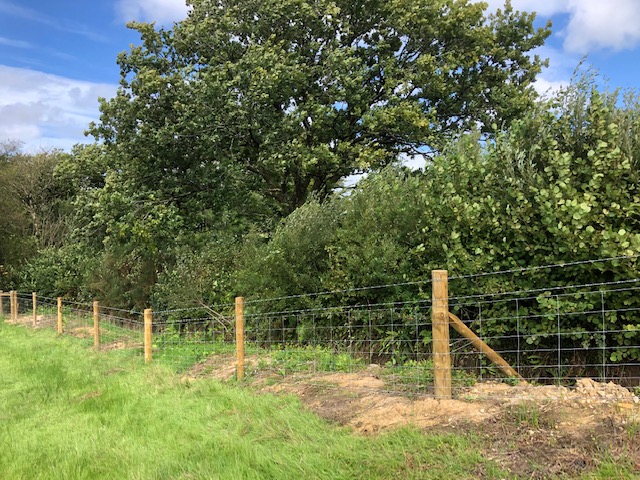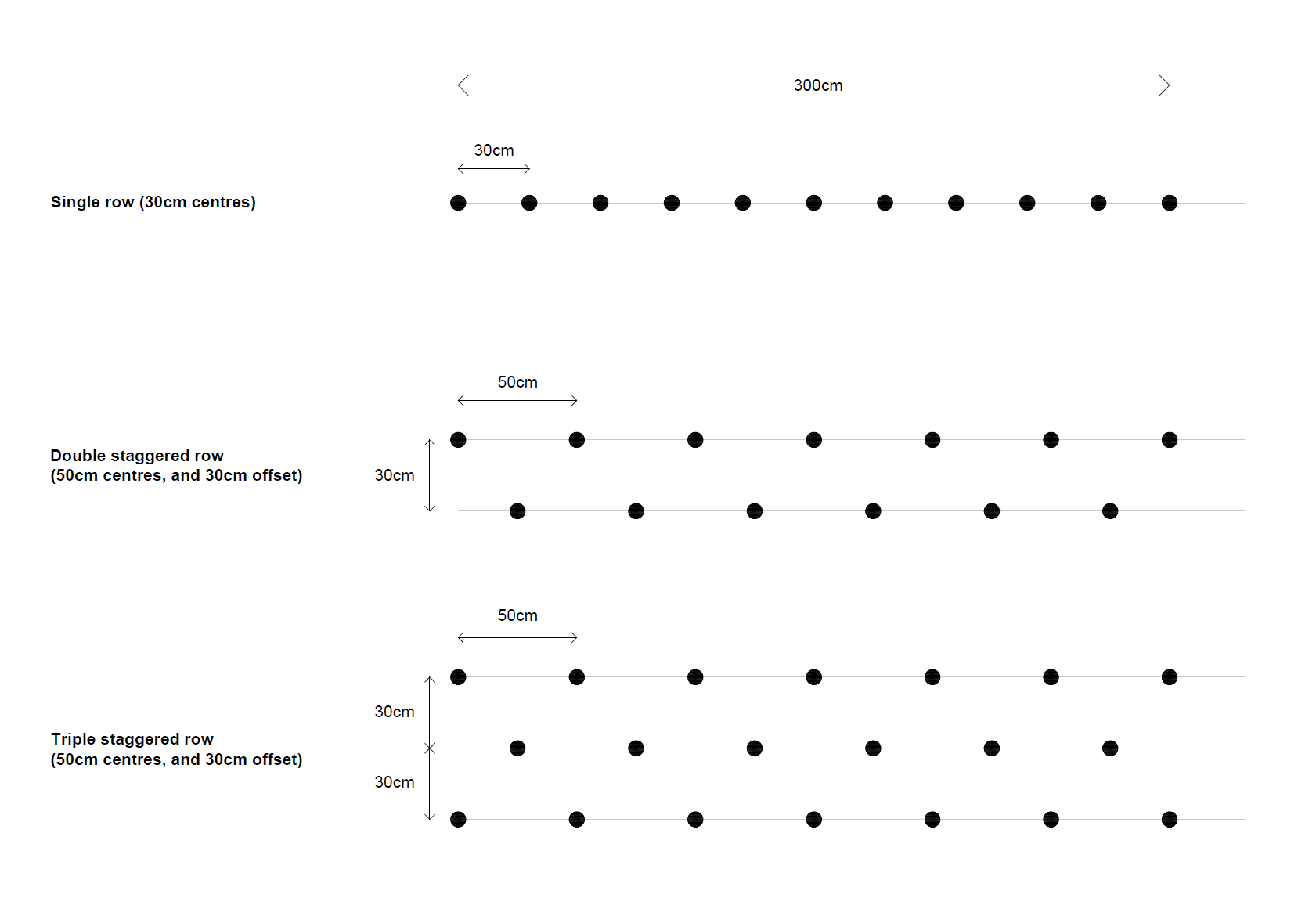Mixed Native Hedges (Part 3) - Specification
Hedges are usually planted as whips or transplants – either as bareroot plants or within pots. Bareroot plants are fairly cheap to source, however they do need to be planted within autumn or non-icy winter months.
Potted plants, whilst more expensive than their bareroot counterparts, are more flexible in this regard – and as such can pretty much be planted within any of the seasons (except summer). Potted plants are also more likely to survive due having a larger proportion of their roots still intact.


Native hedge plants are usually quick to grow, however in some cases clients require an immediate initial impact from the hedge– in which case planting larger 'feathered' trees may be more suitable compared to whips. Plants planted at larger initial sizes are generally more resistant to vandalism and pests, but can take longer to establish.
Protecting Hedges
Once planted, a new hedge – especially one planted with smaller whips and transplants will be vulnerable. To aid the establishment of the hedge by suppressing competing weeds whilst providing nutrients, and retaining moisture, providing a 75mm layer (minimum) of bark mulch is common practice and should be topped up regularly within the establishing period. Mulch mats are an alternative solution, and can be more cost effective for larger lengths of hedge.

Depending on the location, damage from wildlife such as deer and rabbits should also be considered, and appropriate measures taken. Rabbit and deer guards, or rabbit proof fencing can help the hedge establish undisturbed until it is well-established enough that it is no longer a concern. These protective measures may be biodegradable, or may require removal after the hedge has established.
A proposed hedge with a desire line (a frequently used unplanned route or shortcut) running through it may also be vulnerable to pedestrian traffic, in which case installing a post and wire fence can help restrict access until the hedge is thick and dense enough to discourage pedestrians. By the time the hedge no longer needs a post and wire fence, it will be difficult to remove, so leaving the post and wire fence to become part of the hedge is generally the standard approach.
Existing Trees
Connecting new hedges to existing green infrastructure is very common in the UK landscape, and as such they are often planted in close proximity to existing mature trees, hedges or vegetation. Sympathetic consideration of these existing elements is important to minimise any potential damage from planting a new hedge. For this reason, when planting within ‘root protection areas’ (RPAs), or where roots of existing trees are nearby, ‘trench digging’ should be avoided. Any excavations within RPAs to accommodate new planting should be done by hand, with care taken to avoid root damage. It is also preferable that any new hedge plants within RPAs are planted at a smaller initial size to less excavation is required for planting.
Hedge Layout
Knowing how thick you want the hedge to be is key to the layout of the hedge. Hedges are usually planted in single rows or in double staggered formations, however hedges in Devon and Cornwall area often can reach several meters thick, with a specification beyond triple staggered formations.
As mentioned in part 1 of this guide, thicker hedges afford more opportunities for wildlife, and as such are generally better for biodiversity.
When planting the hedges, planting species in groups rather than evenly distributing species, can help the hedge plants to establish, as competition from different neighbours is reduced.
Other elements within the hedge to consider are the ‘specimen trees’ planted within the hedge. These are typically larger growing species, for example Quercus sp. (oak), and are generally planted at larger initial sizes in tree form (usually with a clear stem rather than feathered).
These specimen trees can provide additional height to the hedge in certain locations for additional screening and increased visual interest. Spacing of these trees can be fixed (for example at 5m intervals) for a more formal aesthetic – or, at more random/inconsistent intervals for a more organic, less formal appearance.





